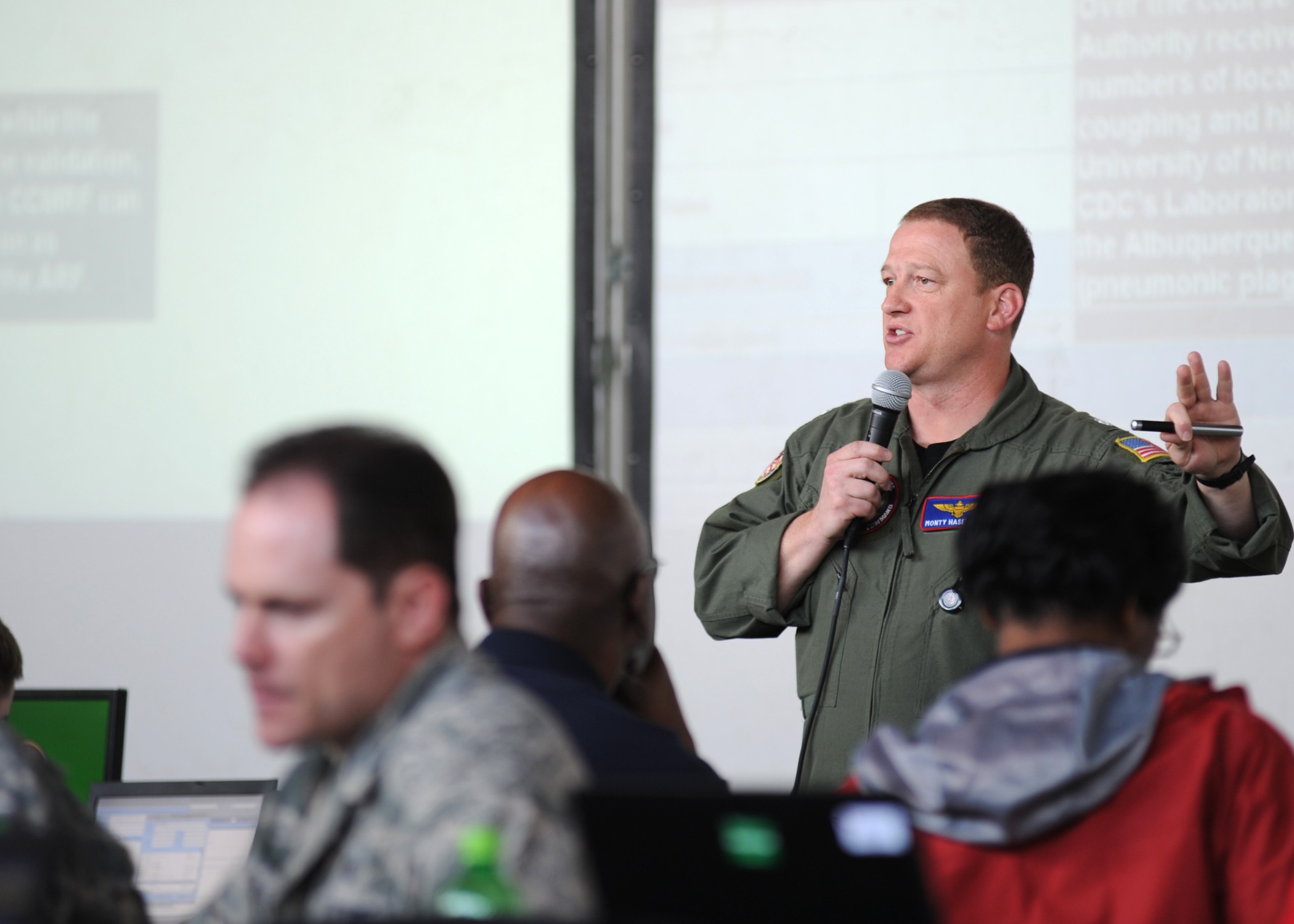HAMPTON, Va. - One hundred members of Joint Task Force Civil Support returned from a one-day Joint Operations Center Exercise at the Virginia National Guard Armory in Hampton, April 22.
The monthly exercise provided training to maintain readiness for a potential chemical, biological, radiological, nuclear or high-yield explosive attack that could occur anywhere in the U.S.
Members spent the morning setting up the joint operations center and discussed best practices prior to implementation later in the day. By afternoon, they began executing based on various scenarios presented by the training section.
"The JOCEX was very enlightening and was a wealth of information," said Michael J. Zerniak, JTF-CS deputy of plans and orders.
The exercise helped standardize processes, define roles and provide reinforcement to JTF-CS members as to how they should operate in a crisis.
"The exercise was key in identifying the need to standardize the FRAGO and WARNO numbering system, which was previously inconsistent," Zerniak said. The improved numbering system will more readily tie the order to the right mission assignment for improved efficiency.
Most participants are experienced in the JTF-CS exercise environment because they constantly train to accomplish the primary mission, which is to provide coordination of Department of Defense forces to save lives, prevent further injury and provide temporary critical support following a CBRNE incident.
JOCEX, a shortened version of the longer exercises like Sudden Response and Vibrant Response, is designed to "walk through the procedures of the mission assignment and orders process in preparation for those exercises," said James Hopkins, training specialist for JTF-CS. The outcome is to provide a meaningful learning experience to Joint Operations Center members and achieve synchronicity throughout the JOC.
DOD established JTF-CS in 1999 to serve as a dedicated joint task force capable of providing command and control, deliberate planning expertise, and the integration of DOD's support to the primary agency for a CBRNE event in the United States, its territories, and possessions. To prepare for such potential disasters, JTF-CS constantly trains.
The JOCEX, one of many exercises throughout the year, has been around for about as long as JTF-CS.
"The JOCEX is a recurring event that has been going on at least since I came to JTF-CS three years ago," Hopkins said. The training helps keep members up to speed with the collaboration tools and requires either getting acquainted or reacquainted with various types of equipment.
We use several collaboration tools, Hopkins said. "JIMS and DDASS work is performed on a laptop. JIMS was developed internally to JTF-CS for efficiency in developing WARNOS and FRAGOS. DDASS is used by the DCO and DCE to provide visibility to NORTHCOM for approval and acknowledgement after the mission assignment is placed into the system.
"DDASS is a tool in which FEMA enters requirements and needs for support, which gets disseminated to all federal agencies involved in the crisis," Zerniak said. "DDASS is a tool for us to monitor what's going on."
Use of JIMS and DDASS, as well as other collaboration tools like Defense Knowledge Online, Web Emergency Operations Center, Command Post of the Future, and Jabber Chat throughout the exercise assists players, not only in identifying areas for improvement, but they help facilitate focus necessary to mission execution.
"At JTF-CS, constant training is a must," Zerniak said. "Monthly training is particularly beneficial because it is reinforcing as well as provides a good foundation to newcomers."


Social Sharing